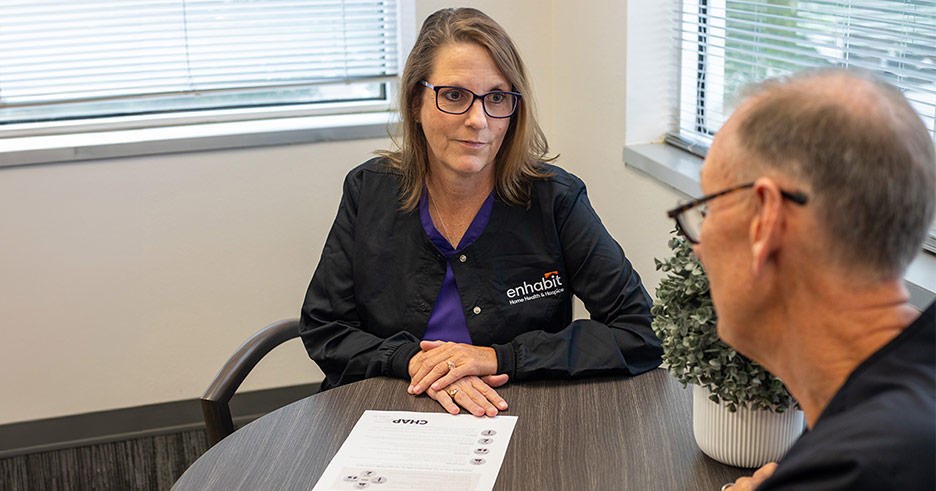Women have and continue to influence home health care, making strides to bring high-quality care to patients in need. To understand the history of women in these critical roles, it is important to take a look into the past. Then, we can put that into context for what the future holds for women in home health care.
The past: Women in home health care
Florence Nightingale – (1820-1910)
Although not a home health care nurse by trade, Florence Nightingale inspired the type of modern-day nursing used in all health care fields today. She was dedicated, determined and diligent in her work. She implemented new sanitary practices and patient services that hospitals never considered before.
Throughout her life, she remained an advocate for health care reform and public sanitation issues. Her efforts largely influenced the quality of care that nurses, hospitals and field clinicians provided to patients across the world. Nightingale’s respectable work and fresh perspective can be attributed to changing the reputation of nursing to a positive and appreciated field of work.

Lillian Wald – (1867-1940)
Without Nightingale, there would be no Lillian Wald. Nightingale inspired Wald to bring health care into the homes of those who needed it in the Lower East Side of New York. The need for health care in these communities was great as they lived in unsanitary conditions and cramped spaces. This caused them to feel sick quite often. Wald dedicated the rest of her career to serving underrepresented communities like the Lower East Side.
She founded a visiting nurses association to bring adequate and affordable health care into these communities. In addition, she started another organization to provide social services to patients, just as home health care teams do today. Wald coined the term “public health nurse” to represent those who worked outside of hospitals and visited patients directly in their homes.
Norma Snow – (Late 1890s/Early 1910s-unknown)
Norma Snow admired Wald’s efforts to make nursing services accessible from the home. Snow, who was the president of the Rochester Women’s Club in New Hampshire, joined forces with a local church to create a visiting nurse association in her area. This association accomplished much of what Wald had worked toward, bringing home health care services directly to the doors of residents in the Northeast.
Snow continued to remain an advocate and supporting community member, serving on the board of the local Red Cross organization. She eventually got the Red Cross to identify the critical need there was for community health nursing, resulting in providing cars and assistants for the visiting nurses.
The present: Women in home health care
Traditionally, women make up the majority of health care workers. They hold more than ¾ of roles in both the health care and social work industry. And the numbers are even higher for women in home health care.
A study done in 2019 shows that around 87% of home health care jobs are held by women. That parallels Enhabit Home Health & Hospice’s workforce, which is 82% female as of December 2022.
Many women at Enhabit value the importance and overall need for diversity in the workplace. They aim to create welcoming and supportive environments for other women interested in moving their careers forward, according to Mary, who is a director of operations at Enhabit.
“As women, we face different hurdles than men, and our leaders support you through that every step of the way,” Mary said. “It is a wonderful sight to see a team truly want what is best for each other and work hard together for one common goal. We have amazing mentors here that are never too busy to help you.”
Although there is no shortage of women in the home health and hospice industry, there is a large gap in the number of women leading it nationwide. Today, women represent almost half of the total work force in the U.S. However, not even a quarter of those women hold senior leadership positions.
However, that is not the case for Enhabit. Women lead Enhabit’s home health and hospice business units, its finance department and its human resources department under the overall leadership of President and CEO Barb Jacobsmeyer, and are well-represented throughout the management ranks.
“Enhabit has a very supportive culture from all leadership levels,” Radiah Drayton, vice president of talent acquisition, said. “I am so proud of Enhabit’s strong representation of successful women throughout our leadership teams!”
While women were busy paving the way for home health care 100 years ago, at Enhabit, they are busy planning and leading the future today, supporting each other along the way.
Social Share
At Enhabit our patients are our number one priority. From providing the latest medical practices to building deep personal connections, we’re focused on upholding every patient’s dignity, humanity and sense of control on their health care journey.
Home health
Our home health services give patients access to the care they deserve in the comfort of their own homes. From disease and injury management to recovery from surgery, our clinicians help patients confidently achieve their healthcare goals.
Hospice care
Our hospice care services place importance on the comfort of every patient living with a terminal illness. Our caring professionals are dedicated to providing not just physical care, but spiritual and emotional support to every patient and their loved ones.






